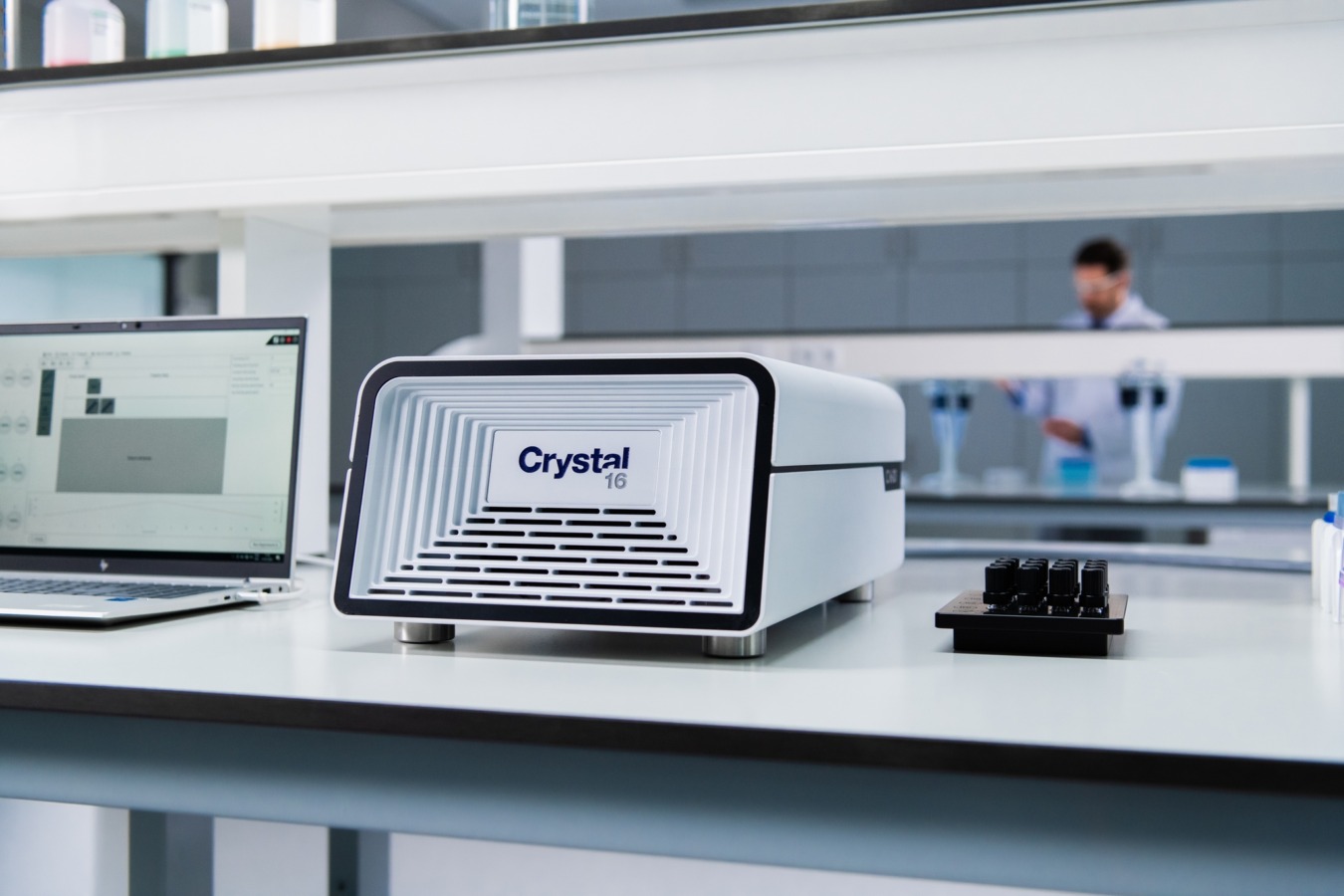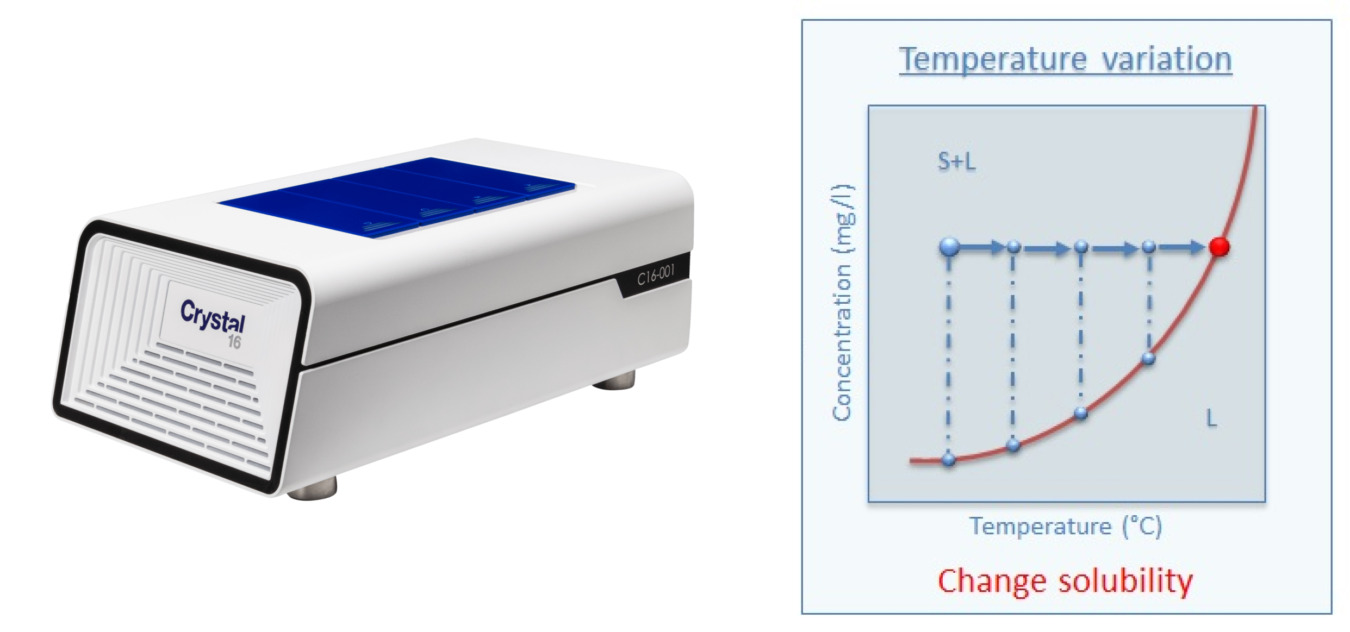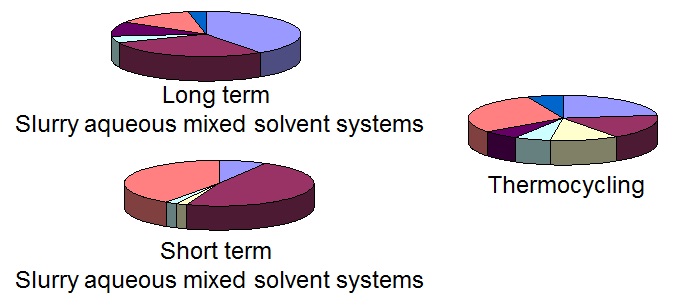Hydrates may have the highest impact on the performance of a pharmaceutical compound. Formation of hydrates during process and storage is quite high since these processes involve presence of water. According to Pudipeddi et al, hydrates show a significantly higher impact on solubility then in the case of changes in polymorphs [1]. Therefore discovery of the propensity of compounds to form hydrates at an early stage (even early lead development stage) allows for early minimization of risks and in cases, selection of compounds.

The presence of water in the crystal lattice may lead to very different physicochemical properties, and so influence the bioavailability of a drug compound. According to Infantes et al, the probability of water inclusion is high when charged groups (salts) or polar groups, such as carbonyl (C=O), ether (C–O–C), hydroxyl (O–H) and primary amine (N–H) groups are present, which is usually the case in pharmaceutical active ingredients [2, 8].
Hydrates, stoichiometric or non-stoichiometric, often crystallize because water improves crystal packing efficiency and satisfies the hydrogen bonding sites of the drug better than the drug itself. They are generally expected to be thermodynamically more stable, hence less soluble and slower to dissolve than anhydrate forms above the critical water activity for hydrate formation. Desolvated solvates are generally metastable and they take up easily the original solvent or sometimes other solvents to minimize free volume (void space) in the crystal. In some cases, nonstoichiometric hydrates lose crystallinity and become amorphous when the very last water is forced out by extreme drying conditions. However, a hydrate may dissolve faster than an anhydrate as particle size/shape distribution, specific surface area and other surface properties considerably affect dissolution [3,8].
Hydrate screening, typically is carried out using techniques such as crystallization from aqueous solvent systems, aqueous slurries, temperature cycling in these aqueous systems, or exposure to high humidity conditions as a solid. This crystallization methods are easily accessible with the use of a Crystal16 instrument. The Hydrate screening by solvent mediated transformations needs usually to satisfy two conditions:
- adequate solubility
- adequate water activity (typically 0.4–0.6). [4]

Sistla et al from Pfizer showed back in 2011 with the use of a Crystal16 instrument that the most successful aqueous slurries using multiple solvent systems are the ones that provide a solubility of at least 8mM. This ‘8 mM rule’ was actually based on the work done by Gu et al since 2001 and Miller et al in 2005 [5-6]. Gu published in 2001 that rates of polymorphic transformation in solvent-mediated transformations are high in solvents that provide this threshold solubility.
However, most APIs nowadays have low aqueous solubility. A solution could be the use of mixed solvent systems. Nevertheless, achieving adequate solubility in high water activity solvent mixtures at 25°C, may still be a challenge. By increasing the temperature, this challenge could be overcome. However it is needed to ensure that the temperature is not increased to a point where complete dissolution occurs or the temperature exceeds the transition temperature for anhydrate-hydrate conversions.
Crystal16
The Crystal16 offers invaluable assistance throughout the various stages of the drug development life cycle. Medium throughput hydrate screening can be performed on the Crystal16. Sistla et al described since a few years ago, a medium-throughput screen using the Crystal16 with an accelerated thermal cycle in a mixed solvent system [7]. They have successfully tested nine compounds to demonstrate:
- the utility of the method
- use of Crystal16 in hydrate screening
- a preferred cycle and solvent system were identified.
With only 15-20 mg of compound a medium throughput screen can be performed by using the Crystal16 instrument.
To address and ensure that the screen maintains adequate water activity during the temperature cycling, a well temperature controlled instrument such as Crystal16 and mixed solvent systems with high water activity (> 0.8) at 25°C need to be considered. For typical water miscible solvents used for hydrate screening such as methanol, ethanol, isopropanol, acetone, and acetonitrile, high water activities (> 0.8) are achieved at water concentrations of 20–65% v/v. Using these solvent mixtures allows for higher solubility, while allowing for adequate water activity in the mixtures throughout the process and especially when the compounds start to relieve the supersaturation and precipitate out [7]. The Crystal16 provides an accurate temperature control and in combination with the transmission technology, offers the perfect tool to easily assess solubilization.

References
- Pudipeddi M., Serajuddin Abu T.M. Trends in solubility of polymorphs. J Pharm Sci 2005, 94, 929–939.
- Infantes L., Chisholm J. and Motherwell S., CrystEngComm, 2003, 5, 480–486
- Doris E. Braun, Lien H. Koztecki, Jennifer A. McMahon, Sarah L. Price, Susan M. Reutzel-Edens, Mol. Pharmaceutics, 2015, 128, 3069-3088.
- Wikström H., Rantnen, J., Gift A.D., Taylor LS., Cryst Growth Des 2008, 8, 2684–2693.
- Gu C., Young V. Jr, Grant D.J.W. Polymorph screening: Influence of solvents on the rate of solvent-mediated polymorphic transformation. J Pharm Sci 2001, 90, 1878–1890.
- Miller J.M., Collman B.M., Greene L.R., Grant D.J.W., Blackburn A.C., Pharm Dev Tech 2005.
- Sistla A., Wu Y., Khamphavong P. Liu J., Pharmaceutical Development and Technology, 2011, 16(2), 102–109.
- Braun D., Karamertzanis P.G., Price S., Chem. Commun., 2011, 47, 5443-5445.
Curious to learn more?
Discover the Crystal16 - the ultimate multi-reactor crystallizer for medium throughput solubility.